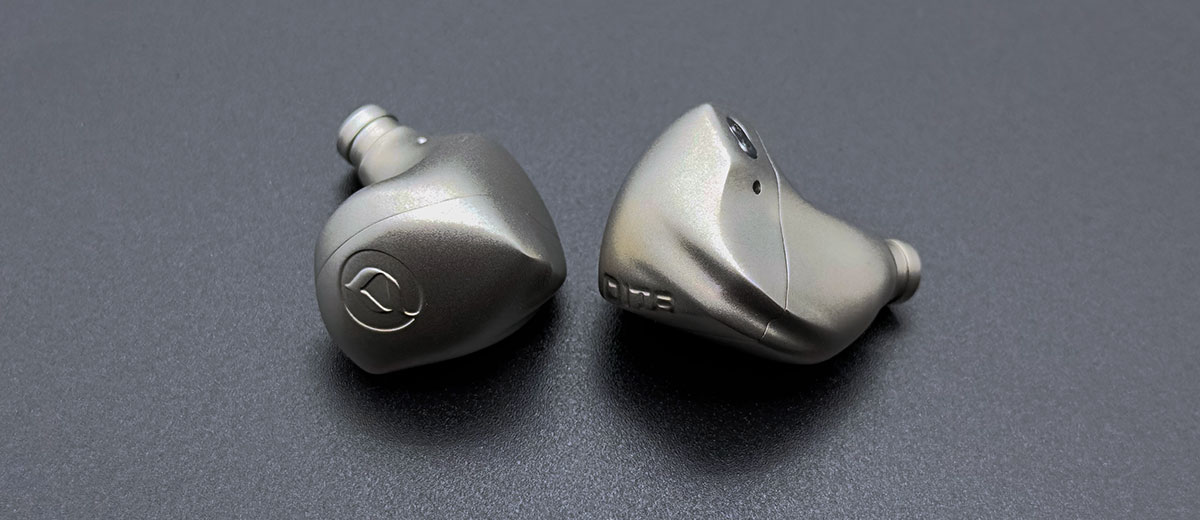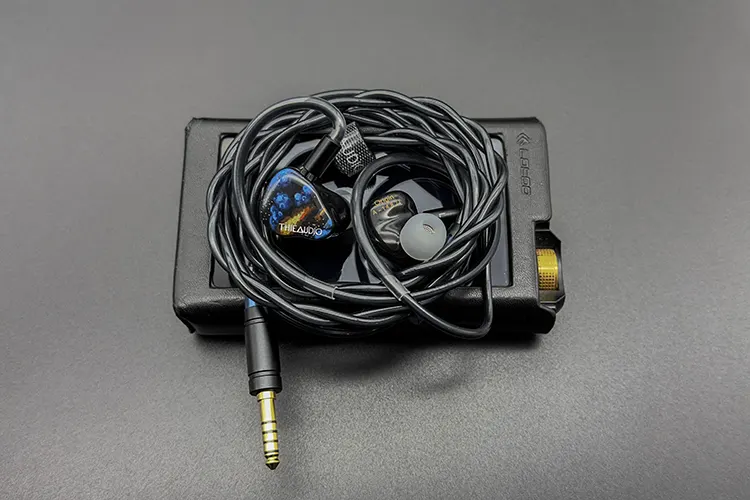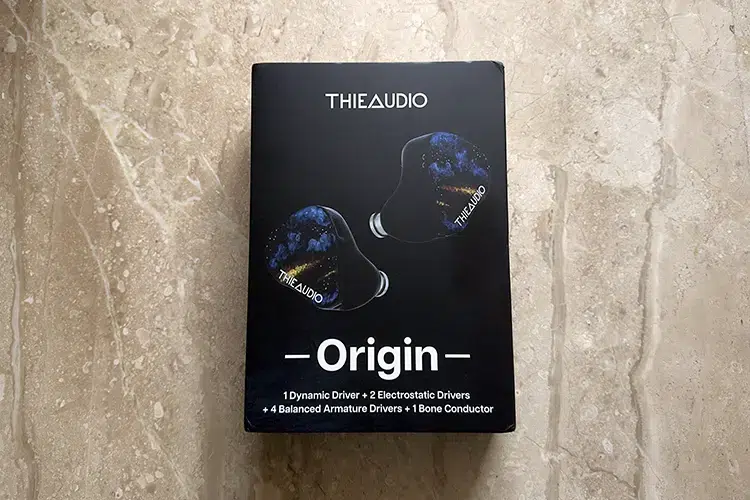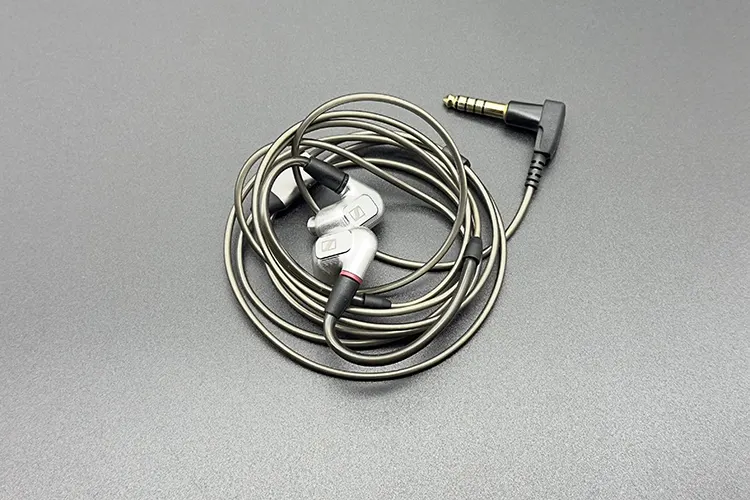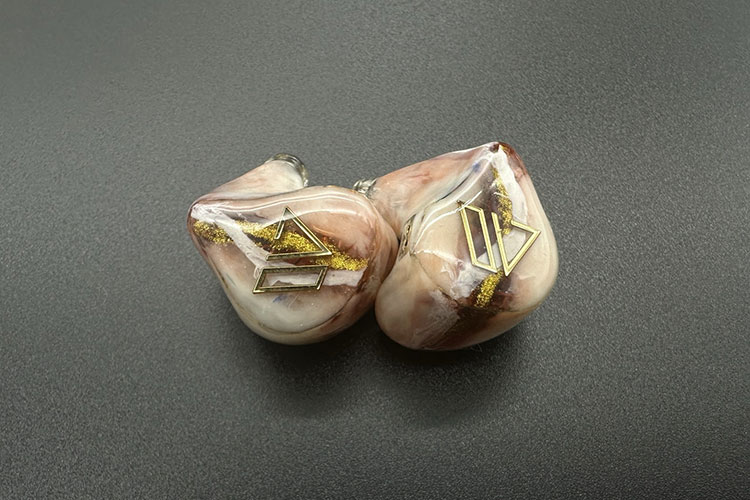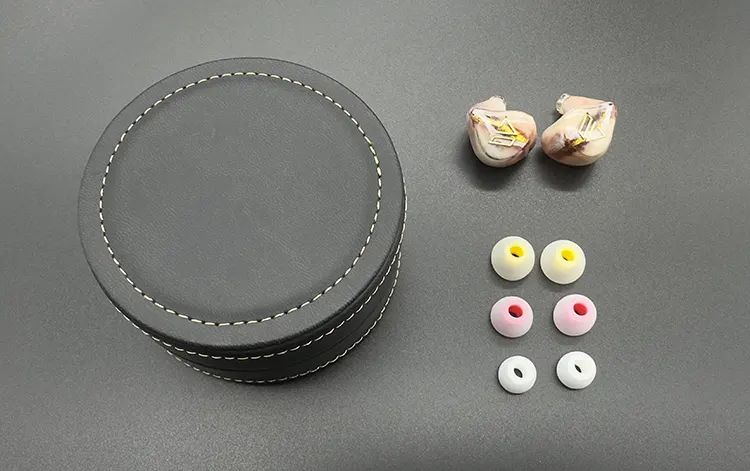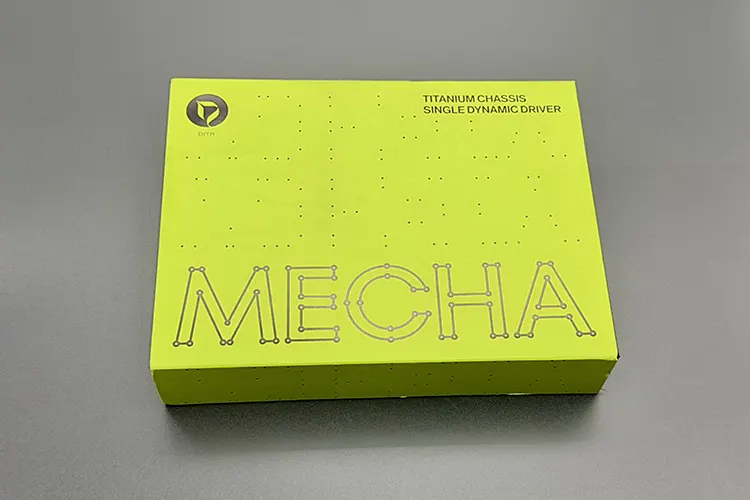Synergy
Efficiency
DITA Audio Mecha has an impedance of 32Ω @ 1 kHz and a sensitivity rating of 113 dB/Vrms. Mecha is highly efficient to drive. Even with low power sources, the Mecha can sound full.
For the bass to kick in properly, it needs a few extra volume clicks, not to be confused with additional power. I do not find it having scaling properties, but a nice, powerful source improves the dynamics and helps it with a more open and spacious sound.
Source Pairings
Mecha is not too fussy about the choice of sources. However, given its nature, I would suggest avoiding a bright source, as it may push the upper midrange into harsh territory.
The Lotoo PAW Gold Touch (LPGT) drives the Mecha with ease, and I love the synergy of this pairing. I find myself staying under a volume level of 30 most of the time.
The LPGT enhances the low-end texture and detail, making it significantly more engaging. In the upper midrange to lower treble region, there is some extra energy that adds spice to the sound without veering into harsh or sibilant territory.
On the Questyle CMA18P, a DAC/Amp featuring an AKM 4493 DAC chipset, the pairing is equally enjoyable. The extra power delivery does not cause any issues, suggesting that Mecha remains stable with powerful sources as well.
With additional power, the dynamics improve slightly, and the bass impact is a touch stronger than on the LPGT, though not as detailed. However, the overall detailing takes a slight hit.
Out of curiosity, I briefly tried the Mecha with the Questyle CMA18M, even though I typically avoid using this powerful desktop DAC/Amp with IEMs. I’m glad to report that the Mecha pairs beautifully.
The bass expands slightly while retaining its character, with an enhanced sense of texture and layering. The soundstage gains both width and depth, making the presentation more expansive. The upper frequencies also gain a bit of weight, which feels lacking with other sources.
Select Comparisons
THIEAUDIO Origin
Technical
THIEAUDIO Origin features a quad-brid driver configuration with a total of 8 drivers per side.
The drivers include an in-house 10mm dynamic driver, four balanced armature drivers with a mix of Sonion and Knowles, and dual Sonion electrostatic super tweeters. In addition to these, there is also an in-house developed 11mm bone conductor driver.
THIEAUDIO Origin has an impedance of 9Ω @ 1 kHz and a sensitivity rating of 102 dB/Vrms. As with the Mecha, the Origin can be comfortably driven by low-rated sources such as dongles and smartphones. Mecha can take a few more volume clicks than the Origin.
Design
Origin has a typical THIEAUDIO design, with the shells built in European medical-grade resin. They have a sleek, all-black look with a vibrant, colorful yet subtle-looking faceplate.
The faceplate has an abstract design showcasing a mix of blue and yellow color patterns. The Mecha takes the titanium route, which I prefer over resins.
The shells on Origin are bigger, though lighter, posing no fit challenges. Mecha, with its ergonomic design, is equally comfortable. Both IEMs have short nozzles, and for me, the same ear tips provide a comfortable fit on both.
The Mecha offers a more premium packaging experience. The stock cables on both IEMs are well-made in terms of build and performance. Ergonomically, both are a bit tricky to handle, with the Origin’s cable being stiffer.
Both cables are modular, with the Origin including 3.5mm unbalanced, 4.4mm balanced, and 2.5mm balanced connectors.
Performance
Both Origin and Mecha feature a bass-first signature, with the noticeable differences lying in how the midrange and treble regions are presented.
Starting with the bass, both the Mecha and Origin deliver a commanding low-end presence. The mid-bass and sub-bass are slightly more pronounced on the Origin, whereas the Mecha is not far behind, offering a similar level of impact but with a tighter and more controlled response. The Mecha’s bass also carries more warmth.
To give a more neutral midrange on the Origin, the bass shelf tapers off somewhat abruptly, resulting in a slightly leaner lower midrange. With its added warmth in the midrange, the Mecha sounds more natural and organic overall.
Vocals on the Mecha are more prominent, closer to the ear, and more lifelike, whereas on the Origin, they can feel a bit lean and dry. The upper midrange on the Origin is slightly thinner, whereas the Mecha extends better, producing taller and fuller notes.
Both IEMs feature a smooth treble region without any harshness or exaggeration. Due to the inclusion of EST drivers, the Origin carries more air and sparkle, while the Mecha rolls off slightly earlier in the upper treble, resulting in a touch less airiness.
Both IEMs retrieve details exceptionally well, though the Origin has a slight edge. Treble notes on the Origin also exhibit better separation.
The Origin offers greater width, while both IEMs provide similar depth. I have always appreciated the holographic soundstage of the Origin, whereas the Mecha feels slightly more restricted in its presentation.
The wider soundstage on the Origin gives instruments more space, giving it an advantage in handling complex passages. The Origin also offers slightly better resolution.
Sennheiser IE 900
Technical
The Sennheiser IE 900 is a TrueResponse 7mm single dynamic driver IEM. The IEM houses three Helmholtz resonators, which contribute a lot to how the treble is tuned.
The IE 900 has an impedance rating of 18Ω @ 1 kHz and an SPL of 94 dB @ 1 kHz. It demands a similar level of power as the Mecha. It can be comfortably paired with low-powered devices. On the LPGT, both these IEMs take a volume level near 30.
Design
The IE 900 is a shockingly compact IEM, crafted from aluminum using a five-axis CNC machine and precision-cut from a single block. It has to be one of the smallest IEMs around.
However, due to its smaller size and narrow nozzle, it can be challenging to find the best-fitting ear tips. For me, the SpinFit Omni ear tips go quite well. Mecha, on the other hand, does not pose such challenges fit-wise.
Although the IE 900 comes with plenty of accessories, the Mecha has a more thoughtful inclusion. The IE 900 includes three stock cables with 2.5mm, 3.5mm, and 4.4mm terminations.
I prefer the modular cable on the Mecha, which saves you from three cables taking up a lot of space. The cables on both of these IEMs have a similar look and feel, but the IE 900 cable has a lot more microphonics.
Performance
The IE 900 has a U-shaped sound signature, balancing a musical presentation with glimpses of an analytical sound.
The IE 900 offers a solid bass with a nice balance of sub-bass and mid-bass. The Mecha has an even bigger and bolder bass profile with more impact in the mid-bass region. The bass on the IE 900 is faster with a shorter decay, while the Mecha’s bass is slower and lingers longer.
The IE 900’s bass is also very detailed yet more controlled, and due to its balanced nature, it gives a more realistic feel. The Mecha has an equally detailed and well-textured bass, with the mid-bass adding some extra fun.
In the midrange, the IE 900 has a neutral character and does not possess the warmth that the Mecha carries. The midrange is more prominent and closer to the ears with the Mecha, whereas it feels a little pushed back on the IE 900.
Thanks to the low end, the lower midrange gets good body and adds richness to the midrange. Vocals are more enjoyable on the Mecha. The upper midrange on Mecha is a bit sharper but has a substantial body to it.
Mecha’s treble feels a bit subdued compared to the IE 900. It is smoother yet detailed, while the IE 900 exhibits better energy and detail with more air and sparkle.
Both IEMs have a fairly wide and deep soundstage but lack sufficient vertical height. The IE 900’s imaging feels more precise, with better accuracy in the spatial arrangement of instruments. It also handles micro detail better, with superior resolution.
Alpha Omega Ra
Technical
The Alpha Omega Ra universal IEM has a tribrid multi-driver configuration. There are a total of 7 drivers with a 4-way passive crossover. The drivers include a 10mm dynamic driver, 4 Sonion BA drivers, and 2 Sonion EST drivers.
The beryllium-plated 10mm dynamic driver takes care of the lower frequencies, dual BA drivers for the lower mids, and a second dual driver BA set for the upper mids frequencies. The final 2 EST drivers cover the higher treble frequencies.
The Alpha Omega Ra has an impedance rating of 28Ω @ 1 kHz with an SPL of 105 dB/Vrms. While both the IEMs benefit from capable sources, Ra takes a bit of extra juice to shine and scale quite well with power.
Design
The Alpha Omega Ra features resin-built shells that are robust and durable, with each one hand-painted to resemble marbles from a distance.
The smaller shells on the Mecha are more comfortable to wear, whereas the Ra’s wider nozzles and bigger shells can make the fit challenging for some.
Ra connects with a 0.78mm 2-pin connector and comes with a 4-core gold-plated 26AWG Litz copper cable.
Performance
The Ra has a V-shaped signature, while the Mecha leans more towards a U-shape. On Ra, there is a bass emphasis and tamed treble, which is nearly similar to what we have on Mecha.
Starting with the bass, the Ra, with its single dynamic driver, offers an enjoyable quantity and impact but lags behind the quality that Mecha offers.
Mecha’s bass is more detailed, with better texture and layering. In the sub-bass region, Ra has more impact, while Mecha has more punch in the mid-bass. For me, Mecha has a more enjoyable bass.
In the midrange, both IEMs share a lush and rich tonality. Mecha has a richer lower midrange. In the upper midrange region, it carries a bit more energy and is better extended, bringing out details with better precision. Vocals and instruments are more natural and organic on Mecha, though Ra is not far behind.
Ra’s treble feels a bit tamed and smoother. Mecha has more air and sparkles in the top-end, with a better sense of openness. Some of the finer details missing on the Ra come alive on the Mecha.
In terms of technical performance, the Ra has an intimate soundstage but offers a similar depth. Mecha takes the lead in the resolution and detailing aspects, painting a cleaner picture. Imaging is more accurate on Mecha.
My Verdict
I appreciate that DITA takes its time with releases, ensuring they are well-refined. With Project M and now Mecha, DITA has stirred up the market.
From the moment I first put the Mecha in my ears, it has been a delight. Its highly detailed and abundant bass stands out as one of the best single dynamic driver IEMs in its price range.
The clean and rich midrange and a detailed treble make the tuning truly impressive. In terms of technical capabilities, I find no room for improvement. Mecha is a great choice for fans of single-dynamic driver IEMs under $1000.
The build and packaging, along with a well-curated set of accessories, make Mecha a fantastic overall package and an instant favorite. The only downside I can point out is the somewhat cramped carry case.
If I were looking for a fun and engaging IEM in the sub-$1000 price bracket, the Mecha would be one of my top choices. It gets a solid recommendation from me.
DITA Audio Mecha Specifications
- Driver Configuration: 10mm Lithium-Magnesium-Carbide Composite Diaphragm
- Impedance: 32Ω @ 1kHz
- Sensitivity: 113dB @ 1kHz
- Frequency Response: 20 Hz – 20 kHz
- Cable: Mono filament single crystal high purity copper with silver plating
- Modularity: 3.5mm, 4.4mm, USB Type-C plugs

